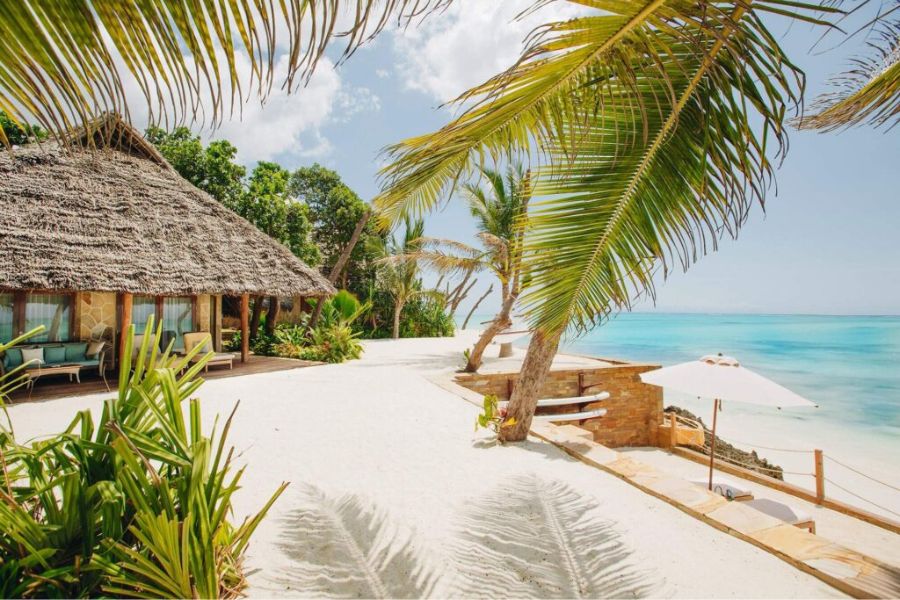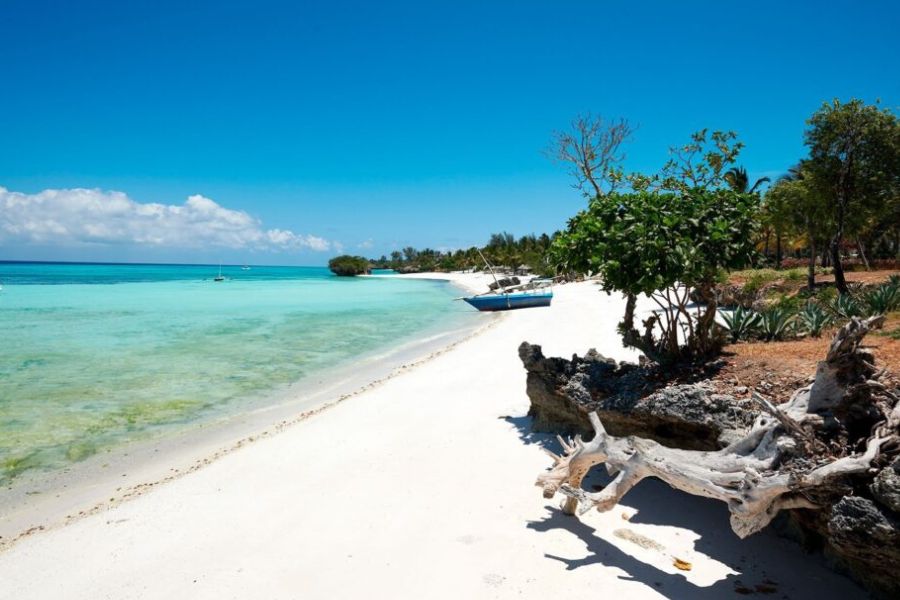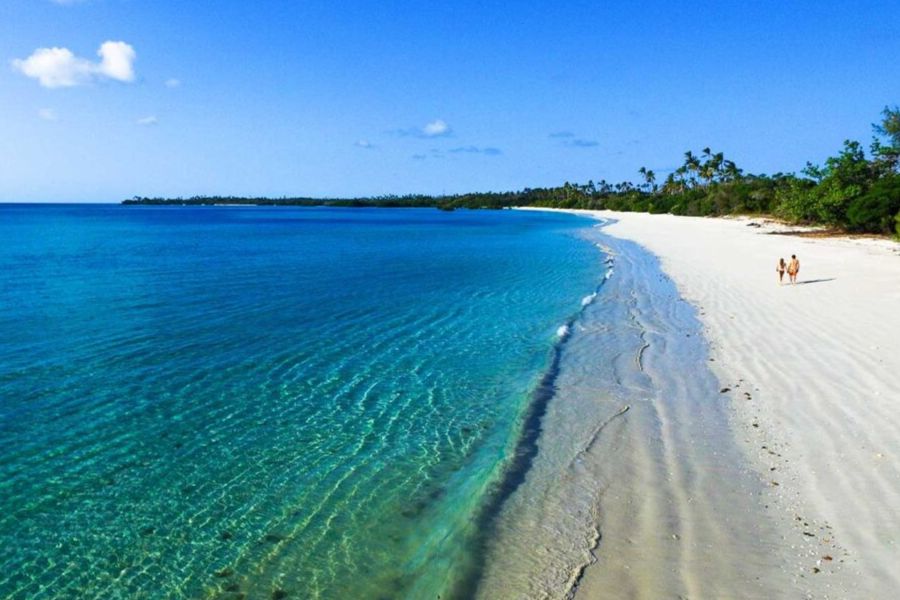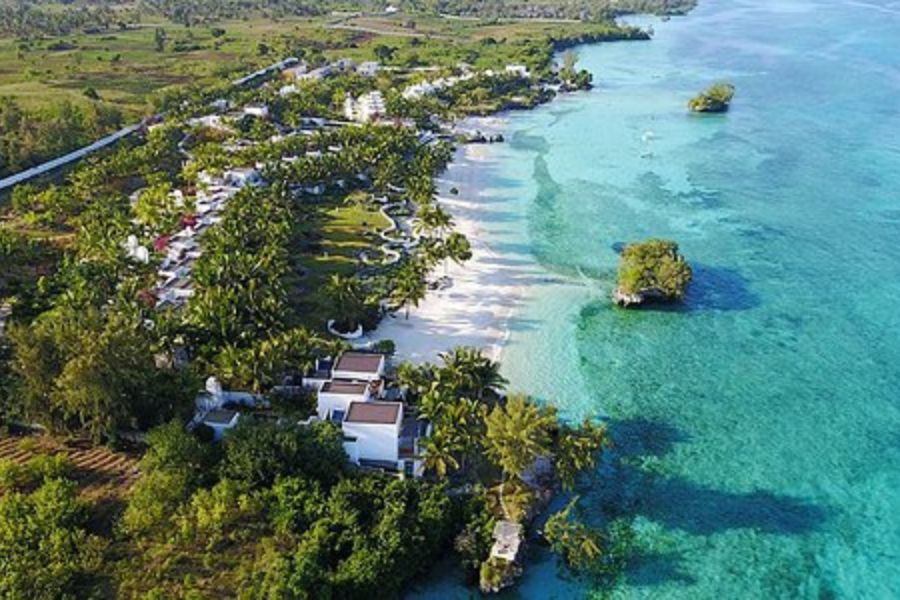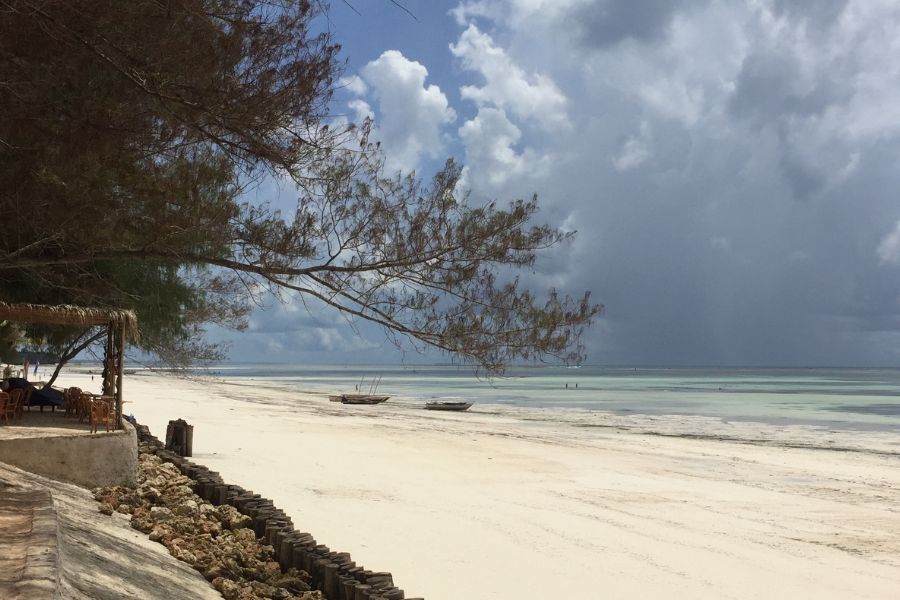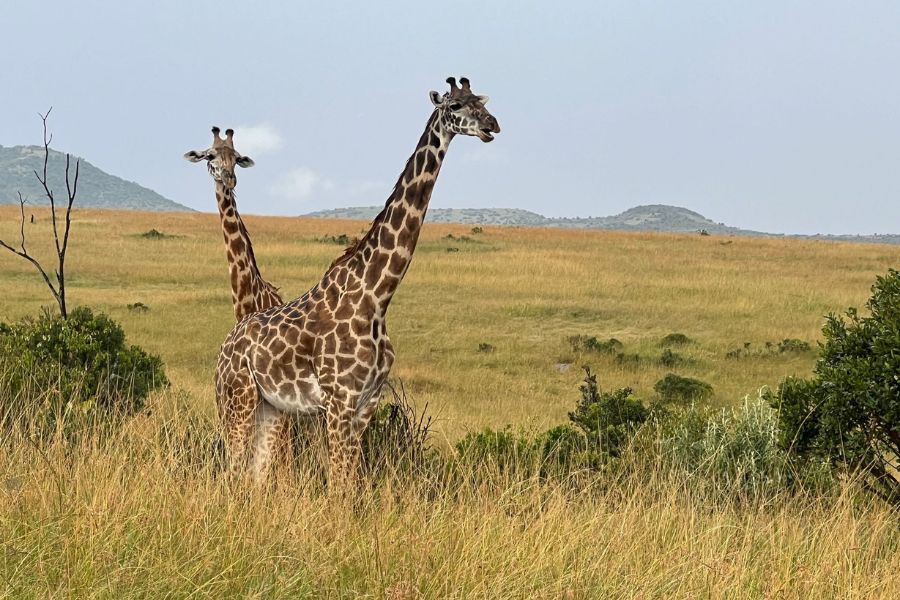
Zanzibar is an archipelago in the Indian Ocean, about 25-50 kilometers off the coast of Tanzania. The archipelago comprises two main islands, Unguja and Pemba, surrounded by several smaller islands and coral reefs.
Zanzibar has a fascinating history, with influences from Arab, Persian, Indian, and European cultures. The island was an important center of trade for centuries, and it was once the world's leading producer of cloves. Today, the economy of Zanzibar is driven mainly by tourism, with visitors flocking to the island to experience its natural beauty, rich culture, and warm hospitality.
One of the highlights of Zanzibar is its beautiful beaches, which are some of the best in the world. The island is also home to several nature reserves and wildlife sanctuaries, where visitors can see various animals and plants, including the endangered red colobus monkey and the giant tortoise.
Another attraction of Zanzibar is its vibrant culture, a unique blend of African, Arab, and Indian influences. The island is famous for its music, dance, and cuisine, which reflect its diverse history and cultural heritage.
Zanzibar is also known as the "Spice Island" due to its long history of spice cultivation. Visitors can tour the spice farms and learn about the different spices grown on the island, such as cloves, cinnamon, nutmeg, and vanilla.
These spice tours are a great way to learn about Zanzibar's spice trade history and how the spices are grown and harvested. Visitors can also purchase freshly ground and packaged spices to take home as souvenirs or for use in their cooking.
Overall, Zanzibar is a truly magical destination that offers something for everyone. Whether you're interested in history, culture, nature, or just relaxing on the beach, Zanzibar is a must-visit destination that will leave you with memories that will last a lifetime.
ZANZIBAR DESTINATIONS.
- Zanzibar Coast: This location boasts the island's finest and most serene beaches.
- Mnemba Island: Located just one kilometer or half a mile northeast of Zanzibar Island, this charming little island is a beach lover's dream.
- Pemba Island: Located 50 kilometers (31 miles) northeast of Zanzibar, Pemba Island remains relatively unexplored, with limited development.
- Mafia Island: Mafia Island is a classic tropical destination, offering visitors a secluded and exclusive retreat away from the bustling crowds of Zanzibar.
- Chumbe Island: Chumbe Island, located approximately 12km (7.5 miles) from Zanzibar town, has the distinction of being Zanzibar's inaugural marine reserve. Moreover, the island is uninhabited.
1. ZANZIBAR COAST:
(i). Zanzibar East Coast.
Despite the potential inconvenience of tides, the eastern coast of Zanzibar is a renowned destination for travelers seeking a tranquil and scenic beach experience. The soft and white sand and crystal-clear waters make it an idyllic spot for sunbathing or taking a stroll along the shoreline.
For adventure enthusiasts, the East Coast offers a range of water activities, such as snorkeling, windsurfing, and diving in the nearby coral reefs. The area features a variety of accommodations, ranging from budget-friendly lodges to luxurious resorts, catering to diverse traveler needs. Whether you are seeking a romantic getaway or a family-friendly vacation, the east coast of Zanzibar is an ideal destination.
Exploring Zanzibar's Serene East Coast:
Zanzibar's eastern coast boasts some of the island's most stunning and peaceful beaches. While several lodges and hotels are available, please note that the tidal nature of the Indian Ocean may necessitate a brief walk before swimming or snorkeling.
Zanzibar's eastern coast boasts some of the island's most stunning and peaceful beaches. While several lodges and hotels are available, please note that the tidal nature of the Indian Ocean may necessitate a brief walk before swimming or snorkeling.
(ii). Zanzibar North Coast:
As a rule, the further north on Zanzibar you go, the more private and less crowded the beaches are. The north coast is also least affected by the tidal range.
Typically, the beaches become increasingly secluded and less populated as you move further north along Zanzibar. Moreover, the northern coastline experiences the slightest variation in tidal levels.
This makes it an ideal location for water sports such as kite surfing, windsurfing, and diving. The clear blue waters and abundant marine life make it a popular destination for snorkeling and scuba diving enthusiasts.
In addition to water activities, the north coast is home to some of Zanzibar's most luxurious resorts and private villas. These accommodations offer a secluded and tranquil escape for those looking to unwind in a stunning tropical paradise.
Suppose you're interested in exploring the local culture. In that case, the north coast is also home to several traditional fishing villages, where you can witness daily life and maybe even learn how to fish using standard methods.
Overall, Zanzibar's north coast is a must-visit destination for those seeking relaxation, adventure, and cultural exploration.
(iii). Zanzibar North East Coast:
A luxurious and well-equipped haven awaits visitors on the northeastern coast of Zanzibar. This area is blessed with an ideal location, offering stunning and breathtaking views of the Indian Ocean, with its beaches sparkling and glistening in pristine beauty.
The calm and crystal-clear waters and minimal tidal variation provide a haven for divers worldwide as they discover a rich underwater world teeming with vibrant marine life. The aquatic ecosystem features many colorful tropical fish, graceful sea turtles, and playful dolphins.
Adding to the adventure, Mnemba Island, situated just a kilometer or half a mile offshore, is a must-visit destination for diving enthusiasts and snorkelers alike. The island boasts the best coral reef systems in the archipelago, providing a sanctuary to a diverse range of marine species.
In the crystal-clear waters surrounding Mnemba Island, visitors can easily spot various fish and other sea creatures, making the experience unforgettable.
Whether you are a seasoned diver or a beginner, Zanzibar's northeastern coast is an ideal location to experience an extraordinary beach holiday, with endless possibilities for adventure and discovery.
(iv). Zanzibar South Coast.
Zanzibar's South Coast is a vibrant and bustling region with rich culture and history. As you venture further south, you will notice an increase in population, providing ample opportunities to engage with the locals and immerse yourself in the local way of life.
One of the main attractions of the South Coast is the cultural and spice tours, which give visitors a chance to learn about the island's history, customs, and traditions. These tours take you through the local villages, where you can interact with the friendly locals and discover the secrets of Zanzibar's famous spice trade.
Whether interested in history, culture, or simply experiencing new things, the South Coast has something for everyone. So, pack your bags and get ready for an unforgettable adventure in this fascinating part of the world!
(v). Zanzibar Southeast Coast:
The southeast coast is an ideal destination if you're searching for stunning beaches and resorts in Zanzibar. However, it's important to note that this region's tidal range is more pronounced than other areas.
This means that the water recedes quite far out during low tide, making it difficult to swim and enjoy the beach. However, the water returns during high tide and provides a beautiful swimming experience. It's essential to plan your activities and beach time accordingly.
The southeast coast is also known for its vibrant marine life and coral reefs, making it a popular destination for snorkeling and scuba diving. Several tour companies offer these activities, fishing trips, and boat rides to nearby islands.
One of the most popular beaches in this region is Paje Beach, which boasts crystal-clear waters and white sand. It's also a great spot for kite surfing and windsurfing, with consistent winds throughout the year.
Overall, the southeast coast of Zanzibar offers a perfect blend of relaxation and adventure, with plenty of opportunities to soak up the sun and explore the underwater world.
(vi). Zanzibar West Coast:
Zanzibar's western coast may feel a bit more remote since there are fewer lodges, but it's still a great place to visit. You'll find Stone Town, located on the island's central-west coast, which is a must-see destination.
If you venture further along the western coast, you'll be rewarded with stunning beaches and crystal-clear waters. Some of the best beaches on this island include Nungwi, Kendwa, and Bwejuu. These areas are known for their excellent snorkeling, diving opportunities, and vibrant nightlife.
If you're looking for a quieter escape, head south to Kizimkazi, a sleepy fishing village where you can swim with dolphins and explore hidden coves. And if you're lucky, you might even catch a glimpse of the rare red colobus monkeys that call the Jozani Forest home.
No matter where you go on Zanzibar's west coast, you will be greeted with warm hospitality, delicious food, and a rich cultural history. It's a destination that's not to be missed.
2. MNEMBA ISLAND:
Located just a kilometer or half a mile northeast of Zanzibar lies Mnemba Island, a tiny haven filled with natural beauty. The surrounding reefs offer some of the best snorkeling and diving opportunities, while the island is a nesting site for endangered turtles.
While Mnemba Island is privately owned, the reef is open to the public and is a popular day trip from Zanzibar. It's a favorite destination for discerning and exclusive-minded travelers and can even be rented entirely for a private island getaway.
Mnemba Island is a popular spot for honeymooners, couples, and families who seek a relaxing retreat away from the hustle and bustle of city life. Visitors can indulge in various activities, such as swimming, kayaking, and sunbathing on the pristine beaches.
The island's lush vegetation provides a perfect spot for bird-watching and nature walks. The resort on the island offers luxurious accommodations with an open-air restaurant that serves sumptuous meals with a view of the Indian Ocean.
Besides swimming with dolphins and turtles, travelers can also explore the nearby fisherman villages and learn about the Swahili culture. The island has a strict eco-policy, and all activities are carried out responsibly and sustainably. Visitors can participate in reef conservation efforts and learn about the importance of protecting marine life.
In conclusion, Mnemba Island is a hidden gem that offers a unique blend of natural beauty, luxury, and adventure. It's a perfect getaway destination for those who seek an exclusive and peaceful retreat in Tanzania.
3. PEMBA ISLAND:
Pemba Island is a hidden gem that lies 50 km/31 miles northeast of Zanzibar. The island offers a remote and pristine destination for those interested in diving and exploring the region's untouched natural beauty.
Pemba Island is known for its small fishing villages, historic ruins, and miles of unspoiled coastline. This little-visited island has limited infrastructure, making it a perfect destination for those who want to disconnect from city life's hustle and bustle and connect with nature.
The island's pristine coral reefs make it one of the best diving sites in the region. The water temperature hovers between 25-28 degrees Celsius (77-84 degrees Fahrenheit), and the visibility is between 20 and 40 meters (66-131 feet), making it ideal for diving and other water sports activities. The coral reefs are home to various marine life, including dolphins, turtles, and whale sharks, making it a perfect destination for nature lovers.
Apart from diving, visitors can also enjoy other water sports activities such as kayaking, fishing, and snorkeling. For those who want to relax and unwind, the island offers spa treatments, sunset dhow cruises, and excursions to the mangrove forest. Pemba Island's exclusive and private atmosphere, with a more laid-back vibe than Zanzibar, makes it a perfect location to pair with mainland Tanzania.
Pemba Island is famous for its cultivation of cloves, and visitors can experience the island's rich history by visiting the clove plantations.
The island can be accessed via most airports in East Africa through Zanzibar or Dar es Salaam, with several charter airlines operating small aircraft. The most frequent route is from Zanzibar to Pemba, which is serviced by Coastal Air and Auric Air flights.
With its natural beauty, pristine waters, and rich culture, Pemba Island is a destination every traveler should experience.
4. MAFIA ISLAND:
Mafia Island is a hidden gem that promises to provide visitors with an unforgettable experience. This beautiful island is the largest of the Mafia Archipelago and is approximately 120km / 75 miles south of Dar es Salaam. It is considered one of the prime diving locations in the Indian Ocean, and it's not hard to see why. The island is home to unspoiled beaches and pristine reefs, perfect for snorkeling, diving, and other water activities.
Visitors to Mafia Island can expect to find the island's top-notch lodges providing excellent logistical support and equipment. The lodges offer various accommodation options, including luxury resorts and eco-friendly campsites. The island's lodges also offer various water sports equipment, such as diving and snorkeling gear, paddleboards, kayaks, and fishing equipment.
To enjoy the best weather, visiting Mafia Island between late May and mid-October is recommended. The weather is perfect for outdoor activities during this period, and the water is warm and inviting. However, visitors should know there may be occasional rain between April and May, while November, February, and March can be uncomfortably hot and humid.
Despite being the third-largest island in the Tanzanian Ocean Territory, Mafia Island is not administratively part of the semi-autonomous region of Zanzibar. It has been politically separate since 1890 and is part of the Mafia District, one of the six administrative districts in the Pwani Coastal region.
The origin of the island's name, 'Mafia,' is still a mystery. Although the island has an Italian resort, the name is not Italian.
The Arabic word Morfieyeh is a possible origin for the name, referring to the group name of the archipelago. The island was recorded as ' Mafia ' in the earliest Portuguese maps and manuscripts from the late 15th century.
Visitors can take a plane from Dar es Salaam to reach Mafia Island. Coastal Aviation and Auric Air offer multiple daily flights that take approximately 30 minutes.
For budget-conscious travelers, ferries to Mafia Island are also available. The ferries can take up to four hours to reach the island, but they are a more affordable option for those on a tight budget.
5. CHUMBE ISLAND:
Chumbe Island is a natural gem 12 km/7.5 miles south of Zanzibar. It is a small, uninhabited island and has been designated as Zanzibar's premier marine reserve. The island is unique as it is privately owned and managed to protect its pristine coral reefs and marine life.
The shallow water reefs surrounding the island offer an exceptional underwater experience. Visitors can discover over 370 fish species, rare birds, and turtles while snorkeling. The island also provides nature trails and the exploration of historical ruins like the old lighthouse.
To access Chumbe Island, visitors can go to the visitor and education center on the island. The center provides information about the island's history and the importance of marine conservation. The island offers seven eco-bungalows powered by solar energy and designed to minimize the environmental impact.
The bungalows offer stunning ocean views and are perfect for those who love nature and want a peaceful escape. The island is home to diverse coral species and marine life, including the endangered coconut crab. The island's eco-friendly approach to tourism ensures that visitors have a minimal environmental impact.
Chumbe Island is accessible by boat transfer from Mbweni, approximately 3.9 miles from Stone Town. A visit to Chumbe Island is a must-do for anyone who wants to experience the beauty of Zanzibar's marine life and learn about the importance of conservation.

